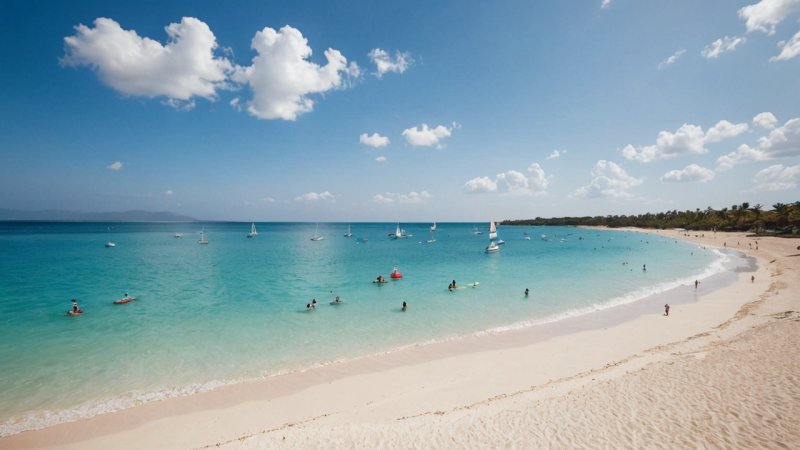Water sports enthusiasts often focus on the thrill of the activity, whether it’s surfing, sailing, or diving. However, one critical aspect that can dictate both safety and performance is a comprehensive understanding of the local marine environment. Knowing the characteristics of your surrounding waters, the weather patterns, and the ecological factors at play not only enhances the experience but also promotes safety and environmental stewardship. This article delves into the importance of understanding the local marine environment, analyzing its impact on water sports and offering guidance to maximize performance while ensuring safety.
The Local Marine Environment: A Vital Component of Water Sports
The marine environment is a complex web of physical, biological, and chemical factors that all influence water sports activities. From tides and currents to marine life and weather conditions, understanding these elements is essential for anyone engaged in water-based activities.
Tides and Currents
Tides are caused by the gravitational pull of the moon and sun, creating predictable cycles of high and low water. Understanding the timing and magnitude of tides in your local area is crucial for any water sport. For example, surfers often seek out specific tidal conditions that create optimal wave formations. Sailors must be aware of currents to navigate effectively, and divers need to time their entry and exit points to avoid strong tidal flows that can make operations hazardous.
- High Tides: Often bring larger waves, which can be ideal for surfing but may also increase the risk of rip currents.
- Low Tides: Can expose reefs and sandbars, which may create hazards for boaters and swimmers.
- Currents: Understanding local currents is essential for planning safe routes and for activities like kayaking or paddleboarding.
Weather Patterns
Weather plays a significant role in the local marine environment. Wind speed, direction, and atmospheric pressure can drastically affect water conditions. For instance, strong winds can lead to choppy water, making activities like sailing more challenging and potentially dangerous.
- Wind Direction: Knowing the prevailing wind patterns can help sailors and surfers choose the best spots for their activities.
- Storm Systems: Awareness of approaching storms is vital for safety and can prevent dangerous situations on the water.
- Temperature Variations: Understanding water temperature can impact comfort, safety, and even the behavior of marine life.
The Ecological Aspect of the Marine Environment
Understanding the local marine ecosystem is equally important for water sports enthusiasts. Various marine species and their habitats can affect activities and safety on the water.
Marine Life and Safety
Knowledge of local marine life is essential for both safety and enjoyment. Certain species, such as jellyfish or sea urchins, can pose risks to swimmers and divers, while others, like dolphins and sea turtles, can enhance the experience. Being aware of the local biodiversity can help sports enthusiasts prepare and avoid potential hazards.
- Stingray Safety: In areas where stingrays are common, shuffling feet while walking in shallow waters can help avoid painful stings.
- Shark Awareness: Knowing the local shark population and their behavior can inform swimmers and surfers about when and where to enter the water.
- Coral Reefs: Understanding the locations of reefs is crucial for divers to protect both themselves and the fragile ecosystems.
Environmental Stewardship
Water sports enthusiasts have a unique responsibility to protect the marine environment. Understanding local ecosystems and their fragility fosters an appreciation for conservation efforts. Simple practices such as avoiding littering, using eco-friendly equipment, and participating in local clean-up efforts can make a significant difference.
Additionally, awareness of the impact of human activity on marine life can encourage sports enthusiasts to advocate for sustainable practices, ensuring the preservation of the local environment for future generations.
Improving Performance Through Environmental Understanding
For athletes, knowledge of the local marine environment can translate to improved performance. By understanding how various factors influence conditions, enthusiasts can make informed decisions that enhance their skills.
Training in Local Conditions
Training in the specific conditions of one’s local environment can lead to better acclimatization and improved performance. For example, surfers who practice in local wave conditions will develop a keener sense of timing and positioning, ultimately leading to better rides.
Similarly, sailors who train in local winds and currents will gain valuable experience and insights that can enhance their sailing skills, especially during competitions.
Utilizing Technology
Modern technology provides water sports enthusiasts with tools to better understand their local marine environment. GPS devices, weather apps, and marine forecasts can help athletes plan their activities more effectively.
- Weather Apps: Apps providing real-time weather updates can alert athletes to changing conditions.
- GPS Devices: GPS technology can help track routes and monitor environmental factors like currents and tides.
- Marine Forecasts: Understanding marine forecasts can help in planning safe and productive outings.
Conclusion
Understanding the local marine environment is a critical component for any water sports enthusiast. From tides and currents to the local ecology and weather patterns, knowledge of these elements can significantly enhance both safety and performance. By fostering a deeper appreciation for the marine environment, athletes can not only improve their skills but also become advocates for environmental stewardship. As we continue to explore and enjoy our oceans, lakes, and rivers, let us commit to understanding and protecting the vital ecosystems that support our passions.






